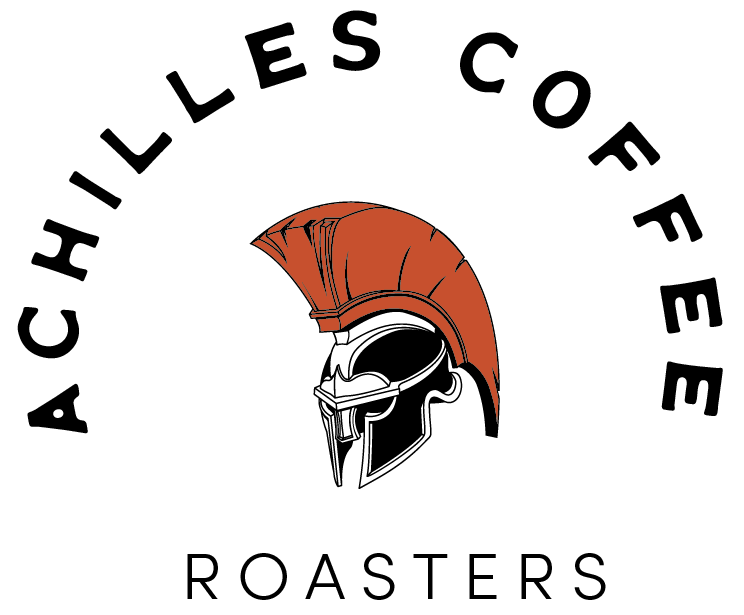
At Achilles Coffee Roasters, we are crazy about our Pour Overs. While it may take longer than other brewing methods, we believe it is the best way to deliver an incredibly consistent cup of coffee. There are many ways to make Pour Over coffee (Hario V60, Chemex, Kone, etc.), but this will serve as a general guide to improving your brew for any of these methods.
What is Pour Over Coffee?

Pour Over coffee is one of many brewing methods made popular recently by the rise of Third and Fourth Wave coffee. By continually pouring fresh water over the beans, you can extract more from the surface layers of the beans. It also allows you to have greater control in the brewing process by changing the grind consistency, water temperature, brew time, or weight of the beans used.
Where Did Pour Over’s Come From?
Pour Over coffee isn’t as old as you would think. As coffee grew increasingly popular throughout the 1800s and into the turn of the 19th Century, so did people’s fascination with brewing to improve the flavor in their cup.
Around 1908, a German woman named Amalie Auguste Melitta Bentz was tired of the bitter coffee from her percolator and began experimenting with other brewing methods. She created the first cup of Pour Over coffee by using some blotting paper and a brass pot that she punctured with a nail. Melitta was so happy with the outcome that she released the Pour Over brewers to the public. By the 1950s, the cone shape that we see today was released for sale. To this day, Melitta is still a very well known brand for its Pour Over equipment and filters.
What Makes a Great Pour Over?
As said above, there are many things you can adjust in your Pour Over brewing to improve the overall flavor of your coffee. We’ll go over each individually.
The Water
Water quality is just as important as any other part of brewing a great cup of Pour Over Coffee. We recommend using clean, filtered water, but using tap water at home will not ruin your cup.
The next thing you want to pay attention to is the temperature of the water. By using water between 195-205 degrees Fahrenheit, you can assure that proper extraction will take place. If your water is too hot you will have a bitter, over-extracted cup, and too cold will leave you with a bland, watery cup. Temperature can easily be measured by a thermometer or temperature controlled kettle.
The Beans

It’s not only important to use quality, freshly ground beans when brewing Pour Over coffee, it is also important to use the correct amount of beans. At Achilles, we use 25 grams for our 12oz Pour Overs and 33 grams for our 16oz’s. The general rule is 60 grams for every liter of water. A simple scale is a very cheap, handy accessory for this step.
The Grind
A consistent grind is crucial to a consistent flavor. We recommend a Burr grinder. A Burr grinder will ensure all of your grinds are about the same size, unlike Blade grinders that will leave you with an uneven grind. To illustrate why this is important, think of cooking. When you chop all of your ingredients into identical sizes they will all cook in about the same time. However, if you have many large and many small items, the small ones will be overcooked, the large ones will be undercooked and will not taste as good.
The Brew

So you have your water, your beans, and a consistent grind. Now you’re ready to make an amazing cup of coffee, right? Not quite, now it’s time to bring it all together with the brew.
First, we recommend quickly rinsing your filter with hot water. This step isn’t always needed but will reduce any paper flavors.
Second, add your freshly ground beans into the filter and start adding your water. You’ll want to do this in a clockwise motion and make sure you are soaking all of the beans. You’ll want to fill up your brewer about 3/4 full and wait about 30-45 seconds while the water drains. This will allow your coffee to “bloom” and release Co2. If you do not allow the bloom to happen that Co2 will produce off-flavors that will end up in your cup.
Once the bloom is complete, continually fill your brewer with water in a clockwise motion. Always ensure to wet all the grinds evenly until you’ve reached your desired brew.
This whole process should take about 3-4 minutes depending on your beans and your grind. Adjust your grind accordingly to change the brew time. A finer grind for a longer brew and coarser grind for a shorter brew time. This will also change with different beans. For example, we use a finer grind for our medium/dark roasts and a coarser grind for our light roasts.
Conclusion
Those are the essentials to brewing an amazing cup of Pour Over coffee. Play around with all of these elements until you are satisfied with your final product. Remember, beauty is in the eye of the beholder, so don’t be afraid to break or bend any of these “rules”.








